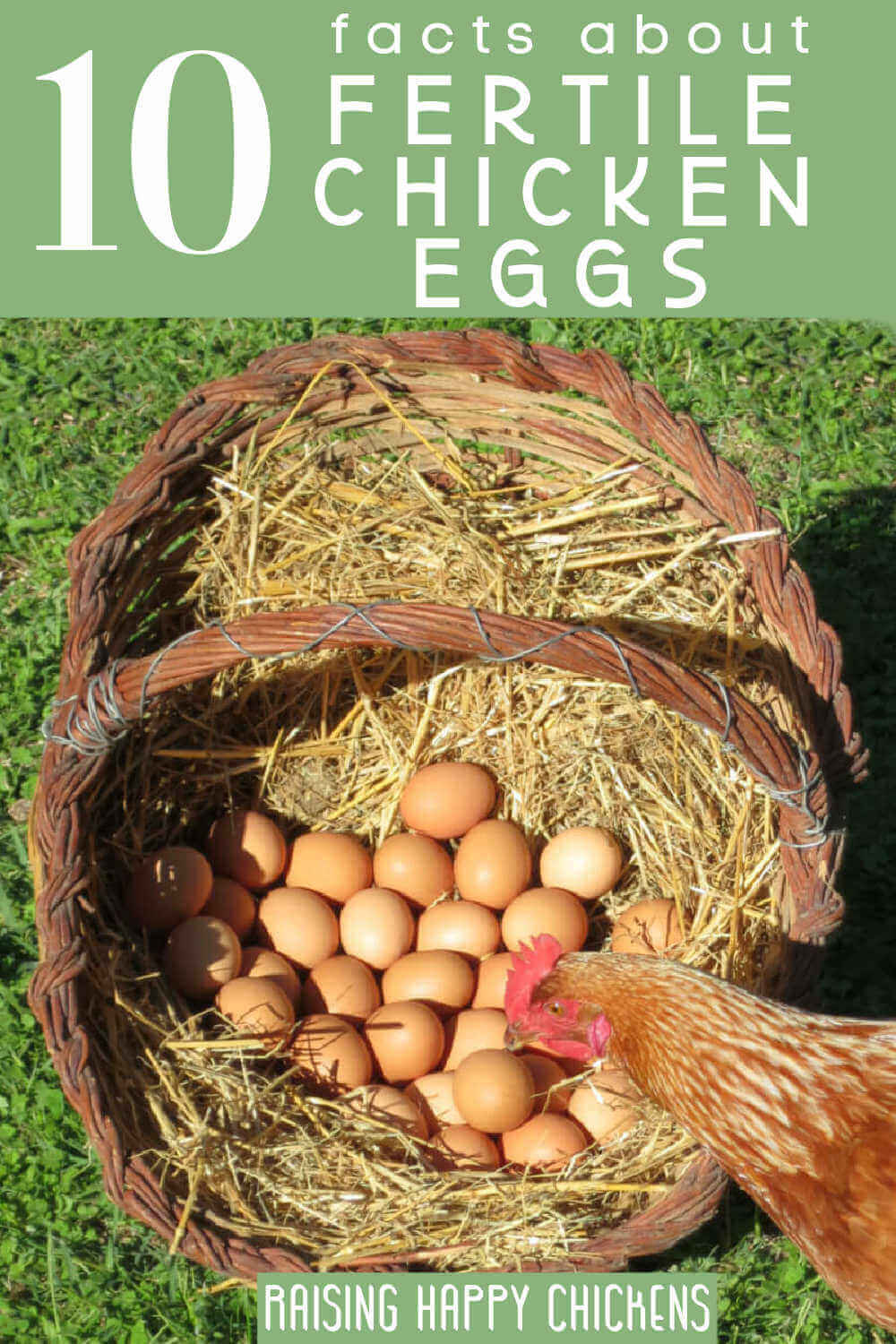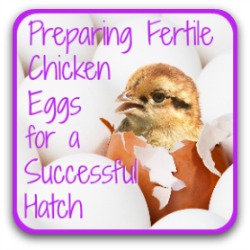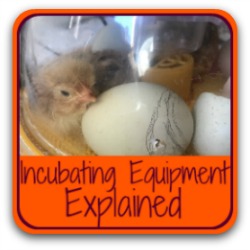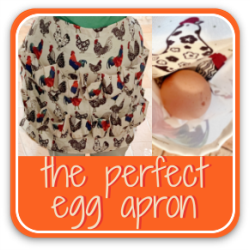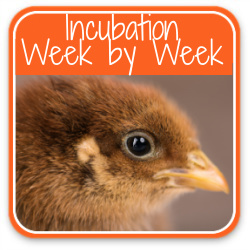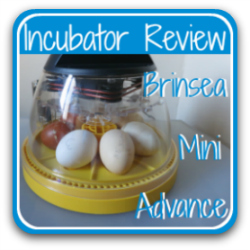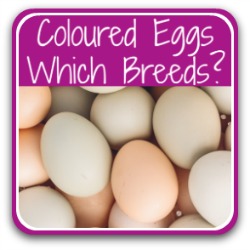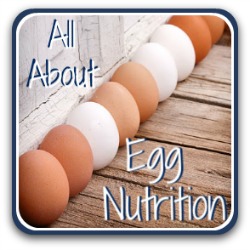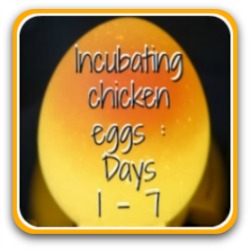- Home
- Before you incubate
- Fertile eggs
Fertile chicken eggs 10 facts you've always wanted to know.
Including how you can tell, what you can do with them and whether they're safe to eat.
Are you trying to discover whether chicken eggs are fertile before you put them into an incubator or under a broody hen?
Or do you worry about eating eggs in case they have the beginnings of a chick inside?
Have you ever wondered how you can tell whether or not an egg is fertile before you eat it?
Or perhaps you've heard that eating fertile eggs is healthier for you, and you'd like to know the truth.
There are lots of myths in the world of backyard chicken-keeping about eggs and fertility.
The weirdest I've seen is that you can tell whether an egg is fertile by swinging a needle suspended on cotton above the egg.
It's a twist on the myth that you can tell the gender of a human baby by the same method.
If only it were that easy!
In this article, I cover the facts about fertile chicken eggs, based on questions I've been asked over the years and answers from both my own experience and from respected sources.
1. Are supermarket eggs fertile?
I was once contacted by a lady who had twice tried to hatch eggs using my online hatching course, without success.
When I talked to her about what was happening, it eventually transpired that she had been using eggs bought from her local supermarket.
She had understood labels saying "free range" to mean that the eggs would be fertile.
I don't blame her. As a child I tried to hatch supermarket eggs myself and was very disappointed when they weren't successful.
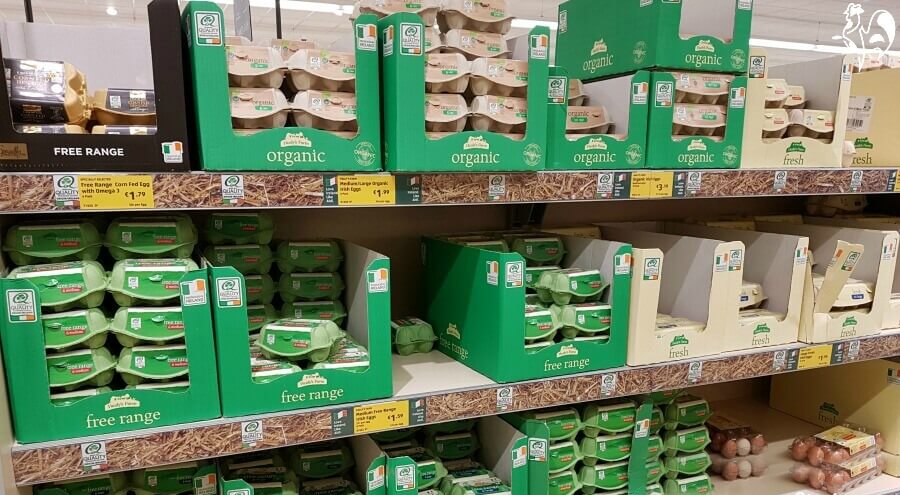 Any kind of egg bought in a supermarket will not be fertile.
Any kind of egg bought in a supermarket will not be fertile.Supermarket eggs are not fertile – not even "free range" or "organic" eggs. Commercially produced eggs are laid by hens who are either in cages, barns or pastures - but without access to a male chicken.
And without a male, a hen's eggs cannot be fertilised.
Which takes us to the next point...
2. Does a hen need a rooster to lay eggs?
No. A hen is perfectly capable of laying eggs without having a male. A young, healthy hen bred for egg-laying and given the proper care will start laying at about 21 weeks old and will lay at approximate 24 hour intervals. Other breeds may lay less frequently.
The gap between lays becomes longer as the hen gets older. During moulting and winter, laying generally slows or stops altogether. But it has nothing to do with having a rooster (UK cockerel) in the flock.
But for a hen to lay a fertile egg, she has to mate with a rooster. The rooster supplies the sperm. It's exactly the same process as for humans.
So if you buy eggs from a farm shop, for example, where hens have free ranged with a rooster in the flock, the eggs may be fertile.
3. How does an egg become fertile?
Links in this section are "affiliate links", which means that if you click and buy something, I earn a small commission at no extra cost to you.
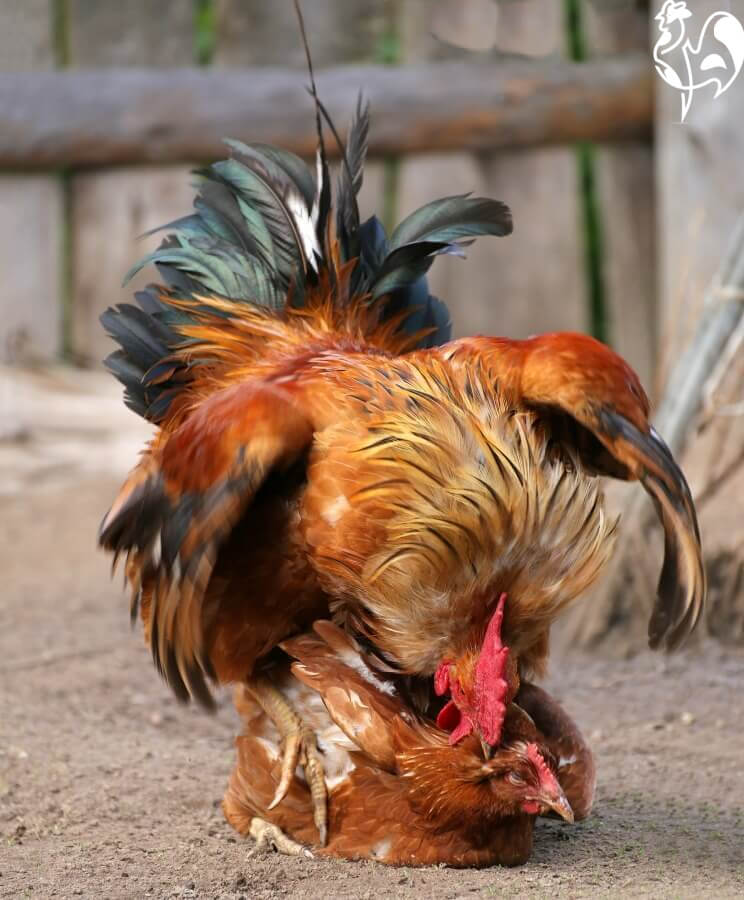 Not much romance here!
Not much romance here!A hen does need a rooster to lay fertile eggs.
What's the process of making them fertile? Basically the same as for most other species: the male mates with the female. His sperm travel into the hen's oviduct and, in the case of poultry, fertilise the yolk of any eggs laid within the next couple of weeks.
There's no romance in this for chickens. No courtship, no flowers... in fact, it can be pretty brutal.
The male simply mounts the hen from the back, gripping onto and "treading" her side and back with his spurs.
He uses his beak to hold onto the feathers on the back of her neck.
The whole thing is over in a matter of seconds.
It can leave hens seriously damaged: roosters often have one or two "favourites" in a flock, who can then become over-used.
The process can leave her with damage to her skin and a loss of feathers on her back and neck. For that reason many backyard chicken owners decide not to keep a male in their flock.
If you decide you do want a male in your flock, consider buying a "hen saddle" which will help protect the hen from the worst excesses of a rooster's advances.
4. If a rooster has mated with a hen, are her eggs always fertile?
Not necessarily. Generally speaking, a hen who has mated will be fertile between 7 and 10 days after. It takes that long for the sperm to reach the oviduct where eggs are made.
But it's worth the wait: her eggs will remain fertile (even if she does not mate again) for around two to three weeks after mating, although fertility will drop after 2 weeks.
But not all roosters have fertile sperm. I had a very kind, very handsome Golden Laced Wyandotte rooster called Spartacus. Sadly, not one of the Wyandotte hens who mated with Sparty laid a single fertile egg.
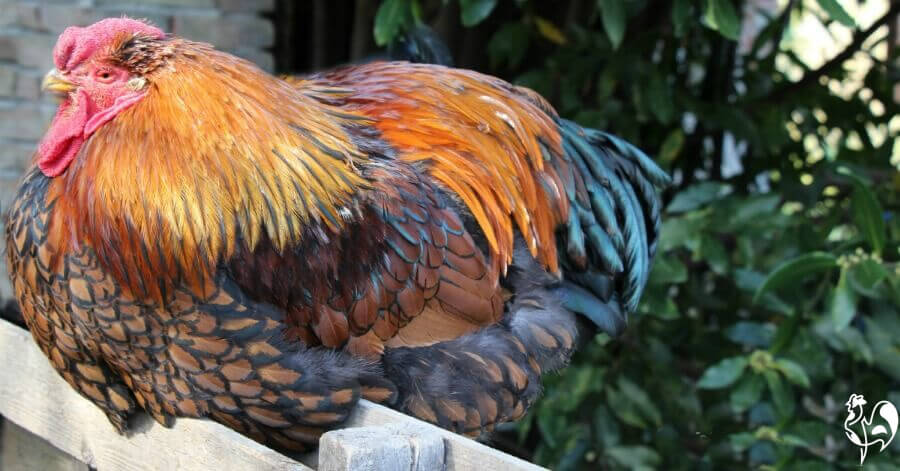 Spartacus, my Golden Laced Wyandotte rooster, never fathered a chick.
Spartacus, my Golden Laced Wyandotte rooster, never fathered a chick.Spartacus, despite his good looks and his constant attempts to be a daddy, was infertile (sadly, Sparty is no more - he died of old age).
Why was he infertile? Who knows. It's just something in his genes not working as it should. Again, very like the human condition. There's not always a reason.
5. How can you tell if an egg is fertile to go into an incubator?
You can't.
Despite what you might read on the internet about swinging needles and brown (or blue, or green, depending where you look) eggs hatching more often (or hatching more males than females), there is no way of knowing an egg is fertile before it's incubated – unless you crack it open.
Which, of course, is a problem when it comes to hatching, when you want to incubate as many eggs as possible that have a good chance of being fertile.
What to do?
Test, test, test!
You'll need to sacrifice a few eggs, crack them open and look for fertility. If the majority are fertile, the chances are that any you put in the incubator will be, too. But it's not an exact science, nor is it a foregone conclusion.
6. What does a fertile chicken egg look like?
When a hen mates, the rooster's sperm penetrates the egg and the blastodisc, a tiny white spot which carries the chick's DNA, becomes fertilised. It's then called the blastoderm.
The blastoderm is what becomes the chick, if the egg is incubated at the right temperature and humidity levels.
Crack an egg into a dish and examine the yolk. If the egg is fertile, you'll see a distinctive "bulls-eye" shape, like the one below (I love my little chicken dishes, don't you?!).
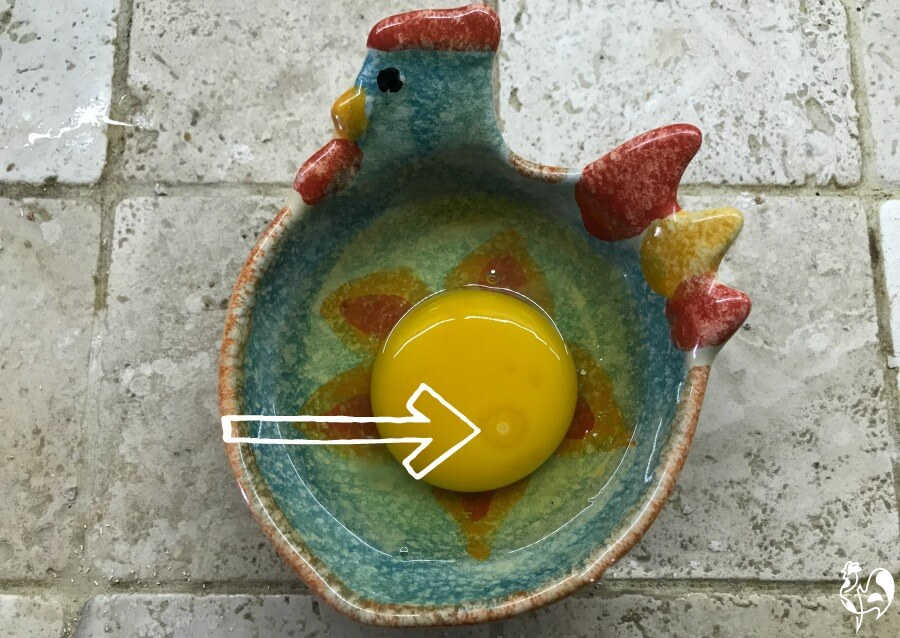 This egg is fertile: see the very distinctive "bulls-eye" on the yolk?
This egg is fertile: see the very distinctive "bulls-eye" on the yolk?The bulls-eye is the first cluster of cells which, if incubated, will become a chick. If the egg is not incubated, nothing happens. The potential for a chick is there, but at this point it's simply a collection of cells.
If it is incubated, the cells will start to divide and after even 24 hours you'll be able to see a definite growth in the bullseye. This development is very obvious in an egg that's been cracked open, but won't be clearly visible in candling until about Day 5 of incubation.
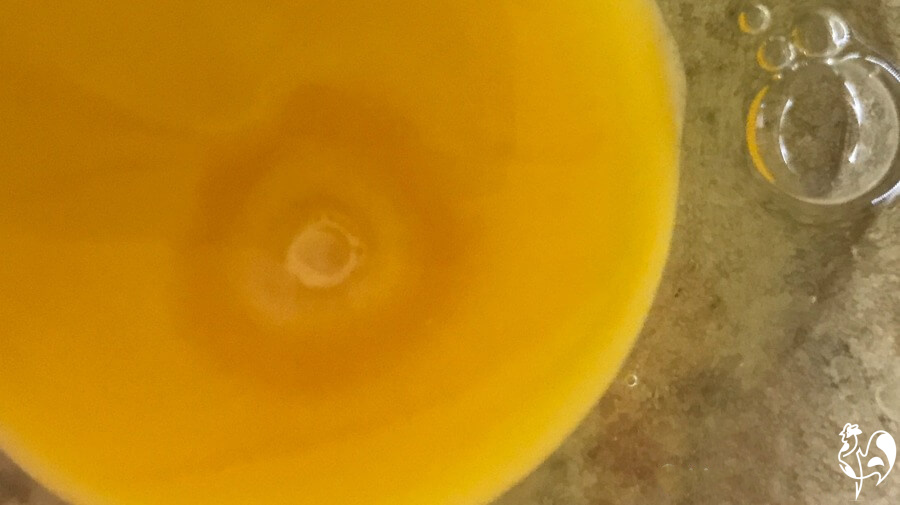 A fertile chicken egg after about 36 hours' growth. The increase in development is only visible by cracking the egg open.
A fertile chicken egg after about 36 hours' growth. The increase in development is only visible by cracking the egg open.Which is why, especially if you have roosters and you don't want to hatch chicks, it's so important to remove eggs from the coop at least once a day.
Watch for seasonal variations, too.
Fertility is generally lower in the winter, starts to increase as days become longer and warmer, is at its peak sometime between Easter and early summer and begins to fall again as the darker, cooler days of autumn and winter approach.
7. What does it mean when there's blood on the yolk?
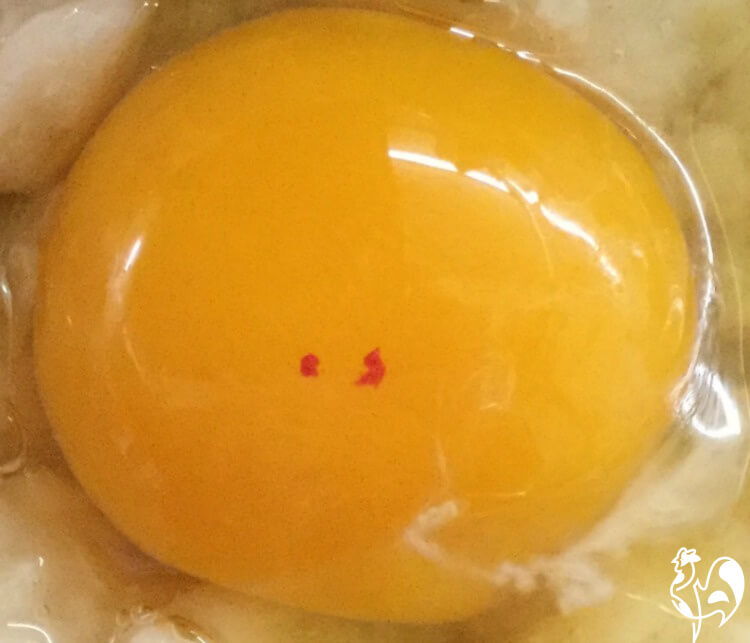 Two blood spots on a chicken egg yolk. I was using this egg in a cake recipe - it's perfectly safe.
Two blood spots on a chicken egg yolk. I was using this egg in a cake recipe - it's perfectly safe.A blood spot on the yolk, also known as a meat spot, is nothing to do with fertility.
It's very common and simply means that a blood vessel ruptured a little as the egg passed through the hen's oviduct.
Eggs with blood spots are perfectly safe to eat. It's not an indicator of fertility and it does not mean there are bacteria in the egg.
It's just, literally, a spot of blood. If it worries you, simply scoop it out with the tip of a knife or spoon.
A blood ring, which you may hear of in terms of an incubated chicken egg, is something completely different. You can find more information about the blood ring in this article.
8. Can you eat a fertilised egg?
Yes, it's completely safe. Unless the egg is incubated, that tiny cluster of cells will not develop and, despite what you may read on some internet sites, you are not eating a baby chick!
It's worth repeating that it's important to collect eggs very regularly to prevent a broody hen from starting to incubate the eggs you want to eat.
If you have a male chicken, you will have fertile eggs. So be prepared to eat them. If you don't like the thought, don't have a male chicken. You'll still get eggs, but there's no chance of them being fertile.
Simple.
9. Is a fertilised egg healthier?
You'll see some claims on the internet that they contain more nutrients than unfertilised eggs.
In fact, there's absolutely no scientific evidence of a statistically significant difference at all(1).
10. Is the white stringy stuff on an egg yolk the embryo?
No, nor is it a sign that an egg is fertile.
It's called the chalaza (plural chalazae). There's one at each end of the yolk, and their role is to hold the yolk steady in the right position.
You'll tend to see them very clearly in a very fresh egg because they're quite thick. As the egg ages, the chalazae become thinner.
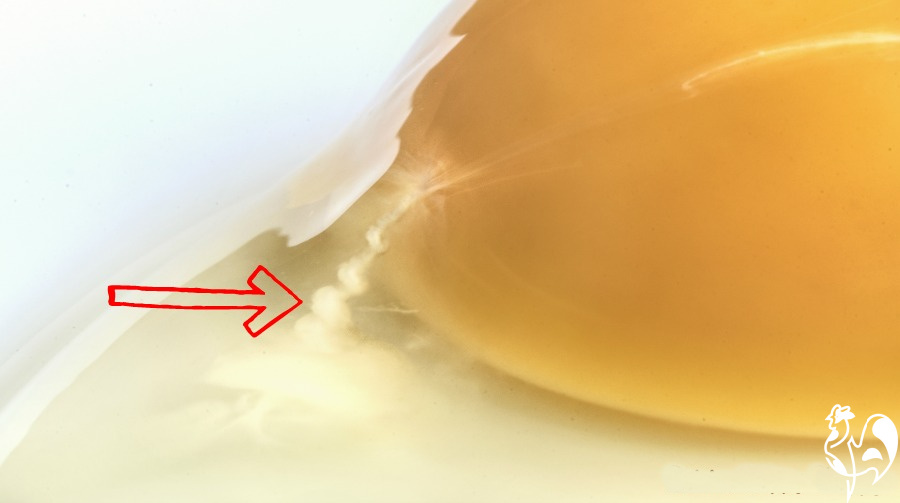 The cloudy white, stringy chalaza. One at each end of the egg keeps the yolk in position.
The cloudy white, stringy chalaza. One at each end of the egg keeps the yolk in position.They're a normal part of the egg, perfectly fine to eat, and nothing to do with fertility!
Where to buy good quality fertile hatching eggs?
USA: Cackle Hatchery.
If you live in the US, I recommend the Cackle Hatchery as providers of a wide variety of high quality chicken breeds.
They will provide all stages from hatching eggs to chicks and adult chickens, and can send either sexed or non-sexed, depending on age and breed.
Take a look at their massive choice of hatching eggs, here.
(This is an "affiliate link", which means that if you click and buy something, I earn a small commission at no extra cost to you)
A couple more recent questions about fertile chicken eggs.
Do fertile eggs sink or float?
Do fertile eggs sink or float?
Eggs sinking or floating is nothing to do with fertility – it's to do with freshness.
The older an egg is, the more it will float. So a fresh egg will sink; the more it tilts upwards or even floats, the older it is.
Does candling show whether an egg is fertile?
Does candling show whether an egg is fertile?
Yes – but it has to have been incubated for at least four or five days before the egg has developed enough to for the eye to be able to see.
What does a fertile egg look like when it's been incubated for four or five days?
What does a fertile egg look like when it's been incubated for four or five days?
Under a candling lamp, you'll be able to see the tell-tale "spider" which is the embryo beginning to develop.
To see what this looks like, click over to this page about candling chicken eggs.
Want more information about chicken eggs? No problem!
Sources.
A lot of "facts" you'll find on the internet are often people's individual views, based on inaccurate information repeated from poor quality sources.
The information I provide in this article and others is based not just on my own experience, but on evidenced facts from scientific, peer-reviewed research and books from highly respected and experienced poultry keepers such as Gail Damerow.
Some of the trusted sources I have used in this article are these.
1. Qiu et al: Differences between fertilized and unfertilized chicken egg white proteins. Pub. Journal of Poultry Science, 2013.
2. Guedes et al: Cholesterol and phospholipids content of yolk from fertilized and unfertilized hen eggs. Pub. Journal of Medical and Biological Research, 1992.
- Home
- Before you incubate
- Fertile eggs
